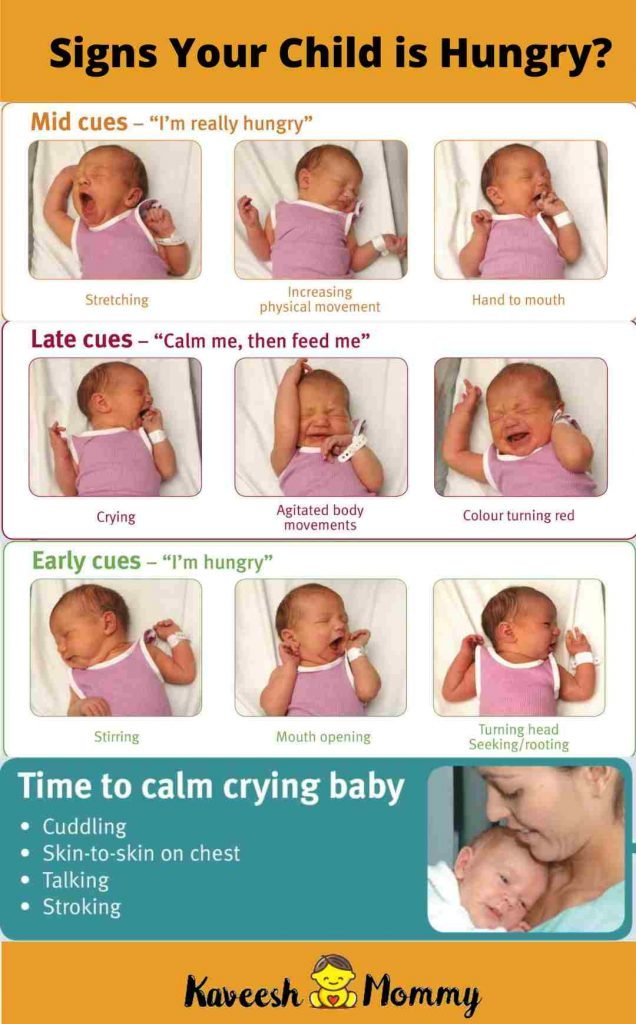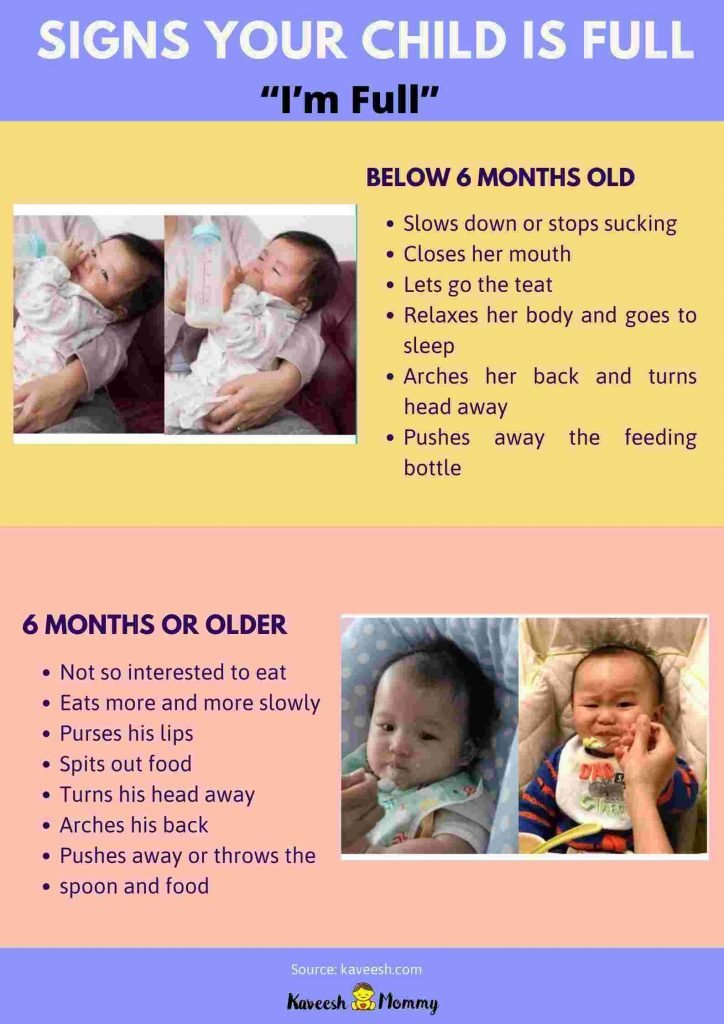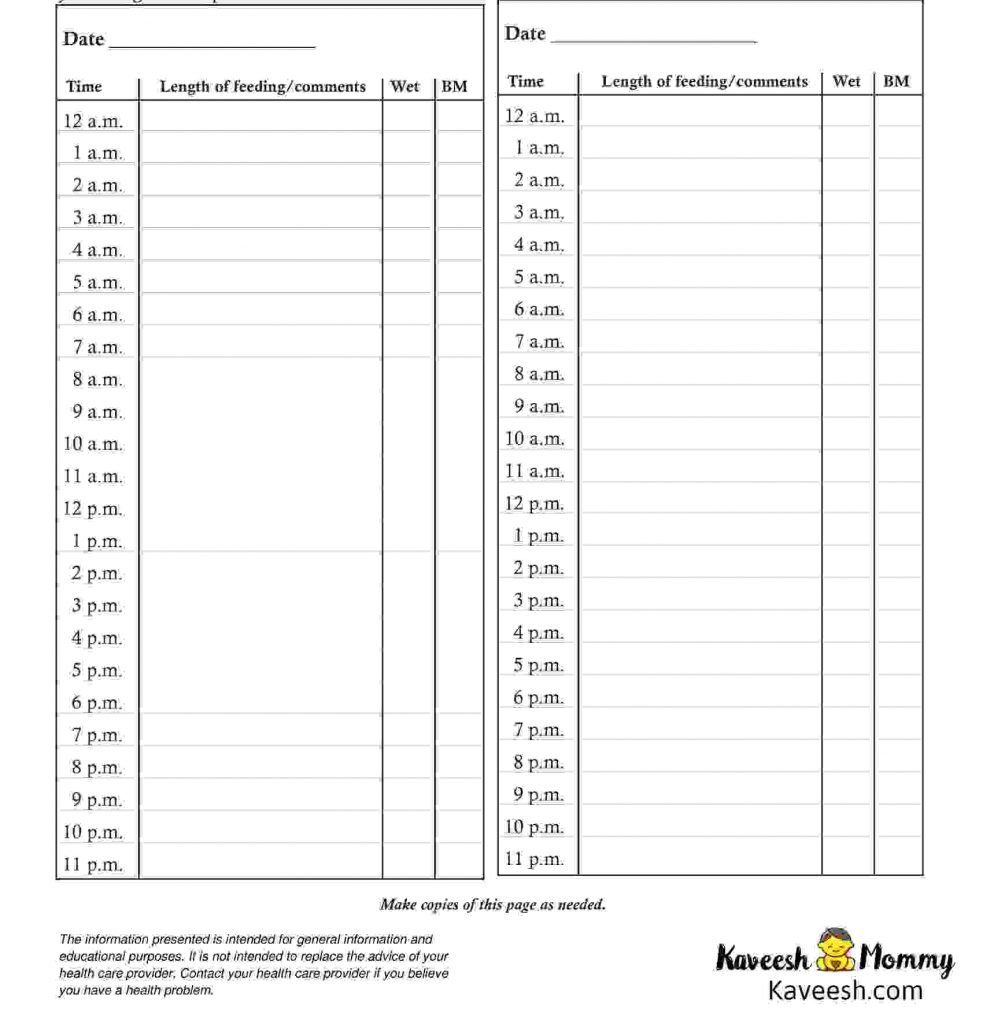In this post i have explained “what are some Signs Your Baby Is Getting Enough Breast Milk”
“signs your baby is hungry”.
“signs your baby is feeding well”.
“Sings your baby is not getting enough milk”.
this post is full of guide with pictures that mother needs to know.
Signs Your Child is Hungry?
Here are some signs of hunger and fullness. that your child can show when he or she infant and 6-month-old baby :
He or she will show signs of hunger or fullness through sounds and gestures, even before your child can speak.
Often crying is a late sign of hunger.
Look for other signs of hunger mentioned below so, you can place your child on your breast or bottle.
With the age of your baby, new signs of hunger and fullness will show. It is important to understand the signs of your child. so you can when and how often to feed your child.
Early signs that your baby is hungry may include:
1.moving their head from side-to-side as if looking for your breast
- sucking their fist, fingers or thumbs
- turning their face into your breast.

learn more about how to tell if your baby is hungry or full from the American Academy of Pediatrics. Is Your Baby Hungry or Full? Responsive Feeding Explained
Signs Your Child is full
Your child may be full if he or she:
- Closes mouth.
- Turns head away from mom’s breast or bottle.
- Relaxes hands.

How do I know when baby is full?
these 6 Signs will guide you if your baby is full
- baby will Turn his or her head away nipple or bottle .
- Starting to play, they quickly get irritated or disinterested in breastfeeding.
- Start crying soon after beginning of breastfeeding.
- baby Fingers, arms and/or legs will be realed.
- baby start sucking breast slowed down.
baby will fall asleep. (read more about this section below )
Tips
- Notice your baby’s hunger cues to feed him and stop feeding when he shows cues of fullness. This allows him to learn regulating how much he eats according to his appetite. Feeding then becomes easy.
- Start looking for these hunger cues every 1-2 hours in newborns or every 3-4 hours for an older baby. This allows a better way to work out when to feed than waiting for a set time.
- If these early cues are not recognized, baby may show some late cues of distress like agitated body movements and crying. He needs you to calm him down before he can get back to eat.
Your baby may be full if he falls asleep while eating
Some newborns are sleepy in early weeks and require assistance to remain awake to feed. If your baby is younger than a month and hasn’t eaten in a few hours,Try to wake them long enough to feed through:
- Undressing them
- Wiping their forehead or feet with a damp cloth
- Playing with their feet and/or hands
- Talking to them
Once your doctor has said your baby is gaining weight well, it’s OK to let your baby fall asleep before they finish feeding. It’s probably a sign they’re full. Only take the lead while you are supplying.
How do I know my baby is getting enough milk?
Your baby’s wet and soiled diapers are the best way to know how much milk is being given during feeding. Here is an example of the least amount you might expect every 24 hours:
How will you know if your baby is getting enough milk?
Day 1 . . . . . . . . . . 1 wet. . . . . . . . . . . 1 bowel movement
Day 2 . . . . . . . . . . 2 wets. . . . . . . . . . 2 bowel movements
Day 3 . . . . . . . . . . 3 wets. . . . . . . . . . 3 bowel movements
Day 4 . . . . . . . . . . 4 wets. . . . . . . . . . 4 bowel movements
Day 5 to 6 . . . . . . 6 to 8 wets . . . . . . .4 bowel movements
After 6 weeks . . . 5 to 6 wets . . . . . . . .5 to 6 if very small in amount; 1 every few days, if large in amount
If you are using disposable diapers, it may be difficult to know if the diaper is wet in the first few days because your baby produces small amounts of urine.
You can place a tissue or a cotton ball in the diaper to help you see if there is urine. Some disposable diapers have a strip to indicate wetness.
By the second week, wet diapers will feel heavier (indicating an increase in urine) and will be easier to count. At all ages, the urine should be pale in color and have a mild smell.
By about day 5, infant bowel movements lighten to yellow in color. This color change is the best sign that your baby is getting enough colostrum at first, and later, enough mature breast milk.
Bowel movements will be very loose and seedy. Your baby may have a bowel movement at every feeding.
How can you tell if your milk is being transferred to the baby during a feeding?
- You may get thirsty
- You may feel relaxed or sleepy
- Milk may leak from opposite breast
- Your breast may tingle or ache
- You may feel discomfort in your abdomen as your uterus cramps during feedings in the first week
- You may have increased vaginal bleeding
How will you know your baby is getting enough milk during a feeding? Expect:
- Your breast will feel full before a feeding and softer after a feeding
- Change in the way baby sucks, from short, rapid sucks to slower rhythmic sucks
- You can hear your baby swallowing
- Your baby becomes relaxed after feeding
Feeding Diary
A written record of feedings and diaper changes will help you to figure out if baby is getting enough to eat.
To use this chart:

If Your baby is getting enough milk, Check your baby for these signs:
what are some Signs Your Baby Is Getting Enough Breast Milk”
- your baby must have 6 to 8 wet cloth nappies or 5 to 7 disposable nappies in 24 hours. The colour should be a pale yellow
- The stools of Baby are turned into yellow, and the texture is loose, seedy, by day 5. Baby should have 3-4 stools every day by four days of age.
- At the beginning baby will not pass a lot of urine but every day increases. By day two look for two wet diapers (nappies) over 24 hours, days three and four look for three or more wet diapers each 24 hours. When your baby is five days old, wet diapers should be more frequent, usually six or more over 24 hours. Read more
- Your baby must have bright eyes, a moist mouth and good colour.
- Your aby must be gaing weight. If your baby’s growth follows the general pattern or curve of the graph he or she is getting enough breastmilk. Read more
- As expected, weight gain is about 155-240 grams, up to age 5.5-8.5 onces per week.
- After feeding, the baby appears relaxed and satisfied to leave the breast alone. Until feeding, their hands may be in fists, always relax and open.
- Your baby will start feed with a few rapid sucks followed by long, rhythmic sucks and swallows with occasional pauses.
- You can hear your child swallowing and see it.
- The cheeks of your baby stay rounded during sucking, not hollow.
- During feeds they seem calm and relaxed.
- At the end of feeds, your baby goes off his breast alone.
- baby mouth looks wet after feed.
- After most feeds your baby is relaxed and fulfilled.
- After eating, the breasts feel softer.
- More or less the same way your nipple looks after feed – not flattened, pinned or white.
- After feeding you can feel sleepy and comfortable.
Remember: Weight gains can vary from week to week and it is recommended that weight gains are assessed over a four week period. It is the rate of growth which is the important issue, which is why percentile charts are so valuable. Check in your baby’s Personal Health Record Book (PHR) for either the Centre for Disease Control (CDC) or World Health Organisation (WHO) Growth charts.
signs your baby is feeding well
- After the birth baby start gaing weight as long as your baby drink mother milk.it’s normal for babies to lose some of their birth weight in the first 2 weeks.
- Your baby will look and move healthy when he or she is awake.
- From the fourth day, they can do at least 2 soft, yellow poos the size of a £2 coin every day for the first few weeks.
Sings your baby is not getting enough milk
Most difficulties with breastfeeding, including low availability, can be resolved more quickly if tackled earlier than later.
- Consider hands pumping your milk if you’re concerned your baby isn’t getting enough milk. Teaspoon, cup or directly into his mouth you may feed expressed milk.
- Please don’t hesitate to seek assistance from a lactation peer or specialist and also from a health care provider if your baby is showing signs that you do not get enough milk. Recall that you’re the baby specialist. Trust your instincts and get help if anything doesn’t seem right.
Sings your baby is not getting enough milk
If your baby isn’t getting enough milk, you’ll notice one or more of these signs:
- after feeds, he will unsettled.
- He weats less than five to six nappies when he is five days old, or he weights less than six nappies within 24 hours of five days.
- His wee is yellow dark and smelly.
- He poos less than twice a day by five days, and his poos are neither yellow nor runny. It’s natural for your baby to poo every few days after a few weeks, when breastfeeding has become known.
- While he is a new born, rare poos can lead to more milk for your baby.
- He is tired, needs to wake up for food, and after the first week his skin is yellow. Some infants with inadequate breastmilk can result in jaundice.
- He makes clicking noises while breastfeeding. These are signs that your baby is not latched on properly.
You should also scan for signs in your breasts that feeding is not going well:
Your breasts feel full and hard after a feed, because you have not been drained by your baby.
You are misformed, twitched or sore in your nipple. This is an indicator that your baby is nipples feeding rather than good mouthful of breast.
Conclusion
Ask your mother-in-law or family doctor if it doesn’t go well for you or your baby, or if you’re unable to breast-feed. You will advise you on a good fixture or find a suitable feeding place for you and your child.
Watch youtube videos
Is my baby getting enough milk? In this video, a health visitor talks about the signs your baby is getting enough milk.
- Is Your Baby Hungry or Full? Responsive Feeding Explained
- 16 Signs That My Baby is Drinking Enough
- Breastfeeding: How Do I Know That My Baby Is Getting ENOUGH Milk?
Free Resources for parents, families and carers
- Poster: Baby feeding cues (PDF) (PDF, 1.09MB), Queensland Government
- “Growth Charts – WHO Child Growth Standards – CDC.” 9 Sep. 2010,
- Growing Strong—Breastfeeding: Good for Baby, good for Mum (PDF) (PDF, 637kB), Queensland Government
- Raising Children Network—Newborns nutrition, Australian Government
- Raising Children Network—Breastfeeding videos, Australian Government
- Booklet: Breastfeeding and postnatal care, New South Wales Government—available in English, Arabic, Chinese (Simplified), Chinese (Traditional), Farsi, Hindi, Korean, Punjabi and Tamil languages
- Booklet: Breastfeeding your baby (PDF) (PDF, 3.6MB), New South Wales Government
- Fact sheet: Breastfeeding tips for new mothers (PDF) (PDF, 111kB), New South Wales Government
- Breastfeeding your baby, Victoria Government
- Brochure: Breastfeeding (PDF) (PDF, 1.3MB), Victoria Government
- Breastfeeding, South Australia Government
Is my baby getting enough milk? Conditions.Health.Qld.Gov.Au. Retrieved January 4, 2021, from http://conditions.health.qld.gov.au/HealthCondition/condition/8/31/421/Is-My-Baby-Getting-Enough-Milk
CDC. (2019, October 1). Signs Your Child is Hungry or Full. Centers for Disease Control and Prevention. https://www.cdc.gov/nutrition/infantandtoddlernutrition/mealtime/signs-your-child-is-hungry-or-full.html
Is my baby getting enough milk? (n.d.). La Leche League International. Retrieved January 4, 2021, from https://www.llli.org/breastfeeding-info/is-baby-getting-enough/





[…] Source: kaveesh.com […]